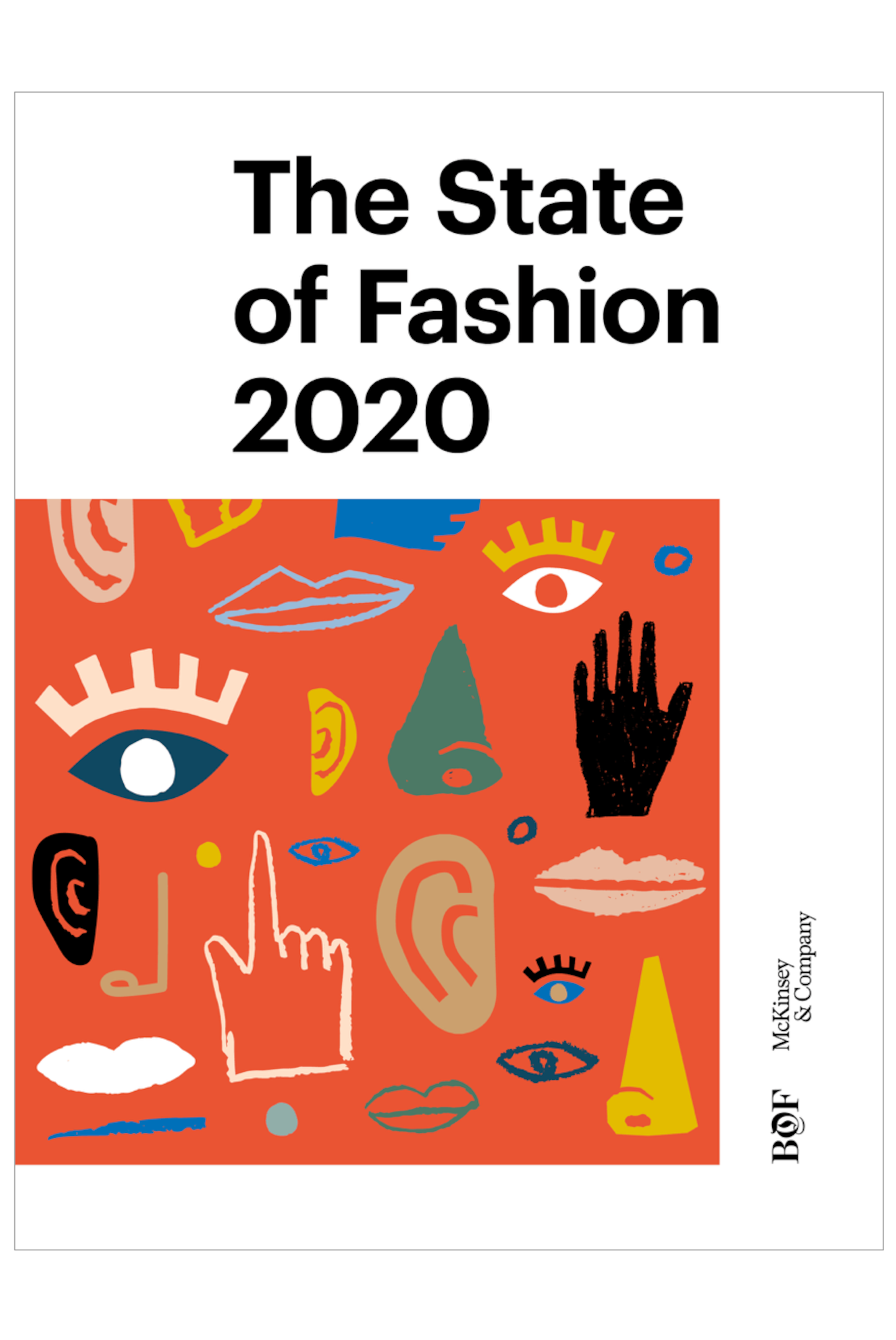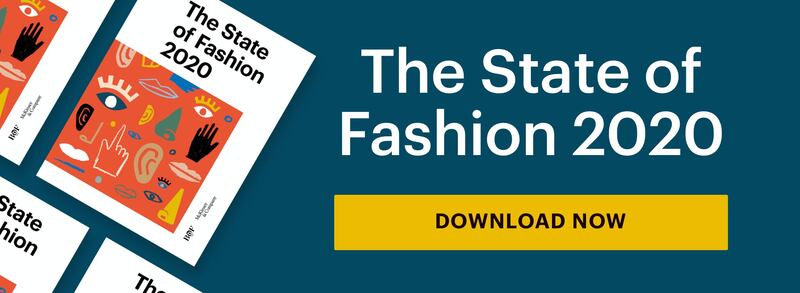
The Business of Fashion
Agenda-setting intelligence, analysis and advice for the global fashion community.

Agenda-setting intelligence, analysis and advice for the global fashion community.

 Opens in new window
Opens in new windowThe Business of Fashion and McKinsey & Company have now released The State of Fashion 2021, focusing on the themes, issues and opportunities impacting the sector. Download fashion’s most authoritative report here.
LONDON, United Kingdom — Fashion leaders are not looking forward to 2020. The prevailing mood among respondents to our executive survey is one of anxiety and concern. In contrast to last year, when there were pockets of optimism in North America and within the luxury segment, we now see pessimism across all geographies and price points. To make matters more complicated, although we know that external shocks will continue, we don’t know what form they will take.
Even without the economic headwinds, these would be challenging times. The McKinsey Global Fashion Index (MGFI) forecasts that global fashion industry growth will slow further — down to 3 to 4 percent — slightly below predicted growth for 2019. Fashion players are under pressure to be digital-first and fully leverage new technologies, to improve diversity across their assortments and organisations and to address growing demand for the industry to face the sustainability agenda head-on.
Yet not all companies are created equal. Polarisation persists and the “Super Winners” — the top 20 players by economic profit — account for more than the combined economic profit of the entire industry. Not only are they highly value-creating and of immense scale, but they often pioneer innovation in the industry through their product ranges and interaction with consumers. They are also best positioned to attract the industry’s limited resources and talent, while others risk getting left behind. A growing proportion of publicly traded fashion companies are actually “value destroyers” that rack-up negative economic profit. In a “winner takes all” market, the implications for laggards are troubling.
ADVERTISEMENT
Volatility is here to stay, so fashion companies should take steps to become more resilient, build a profound understanding of the risks they face and consider strategic actions to minimise them. Successful companies will be the ones that make moves early, focus on boosting earnings over revenue growth, and work out how to improve productivity while ensuring operational and financial flexibility. Crucially, all this will require leaders who make quick decisions in an environment of great uncertainty.
The good news is that for companies that do display resilience and resolve, additional rewards are there for the taking beyond 2020. While China continues to present a lucrative opportunity for many global and local fashion players, some companies are at risk of becoming over-reliant on the market. We see further potential to explore markets beyond China, including India, Southeast Asia, the Middle East and Russia.
Successful companies will be the ones that make moves early and focus on boosting earnings over revenue growth.
To better address consumer themes next year, fashion players should focus on clearly understanding how to best use new social media channels and functions, how to optimise their store networks and experience, and how to best deliver industry change toward greater sustainability. Both R&D and innovation will play vital roles in delivering short-term sustainability targets and in reinventing fashion’s economic model for longer term transformation. Consumers and employees will continue to demand more from purpose-driven companies that champion their values — from climate change consciousness to diversity and inclusion.
Nonetheless, threats remain for incumbents across the industry who don’t respond or adapt fast enough. Facilitated by e-commerce marketplaces linking them direct to global consumers, Asian players will intensify their competition with western brands through cross-border channels. Meanwhile, digital pure players that pioneer new business models may prove exciting as new paths to profitability emerge, but other tech players will begin to falter. And as industry-wide digitisation progresses, the need for reinvention has even reached showrooms and trade fairs.
While 2020 is not expected to be easy, it will be significantly more challenging for some companies than for others. Indeed, the year ahead will require fashion companies to deliver meaningful change across the value chain and on multiple fronts while mitigating risk and managing uncertainty. But, for the fortunate few, there will also be opportunities to capture.
The 10 fashion industry themes that will set the agenda in 2020:
1. On High Alert
Continued caution is advised for the year ahead as mounting underlying turmoil could disrupt relations among both developed and emerging market economies. Indicators of recession risk are spurring companies across industries to build a resiliency playbook and plan for other macro risks such as geopolitical instability and the inflammation of trade tensions.
ADVERTISEMENT
2. Beyond China
China will continue to provide exciting opportunities and play a leading role in the global fashion industry, but the colossal market is proving harder to crack than brands anticipated. As some successful players become over-reliant on China and others struggle, companies should consider spreading their risk by expanding to other high-growth geographies.
3. Next Gen Social
As traditional engagement models struggle on established social media platforms, fashion players will need to rethink their strategy and find ways to maximise their return on marketing spend. Attention-grabbing content will be key, deployed on the right platform for each market, using persuasive calls-to- action and, wherever possible, a seamless link to checkout.
4. In the Neighbourhood
Consumer demand for convenience and immediacy is prompting retailers to complement existing brick-and- mortar networks with smaller format stores that meet customers wherever they are and reduce friction in the customer journey. The winning formula will feature in-store experiences and localised assortments in neighbourhoods and suburbs beyond the main shopping thoroughfares.
5. Sustainability First
The global fashion industry is extremely energy-consuming, polluting and wasteful. Despite some modest progress, fashion hasn’t yet taken its environmental responsibilities seriously enough. Next year, fashion players need to swap platitudes and promotional noise for meaningful action and regulatory compliance while facing up to consumer demand for transformational change.
ADVERTISEMENT
6. Materials Revolution
Fashion brands are exploring alternatives to today’s standard materials, with key players focused on more sustainable substitutes that include recently rediscovered and re-engineered old favourites as well as high-tech materials that deliver on aesthetics and function. We expect R&D to increasingly focus on materials science for new fibres, textiles, finishes and other material innovations to be used at scale.
7. Inclusive Culture
Consumers and employees are putting increasing pressure on fashion companies to become proactive advocates of diversity and inclusion. More companies will elevate diversity and inclusion as a higher priority, embed it across the organisation and hire dedicated leadership roles, but companies’ initiatives will also come under increasing scrutiny in terms of sincerity and results.
8. Cross-Border Challengers
Established fashion brands and retailers will face growing competition from new Asian challengers, as manufacturers and SMEs step out of their traditional roles and sell directly to global consumers. Expect greater competition from hitherto unknown players in the Asian supply chain who design popular items to sell at affordable prices using cross- border e-commerce platforms.
9. Unconventional Conventions
Traditional trade shows must respond to the increase of direct-to-consumer activity, shorter fashion cycles and digitisation by embracing new roles and fine-tuning their target audience. In a bid to differentiate themselves — or even just to survive — more of these events will add B2C attractions or launch new services and experiences to improve relationships with their traditional B2B audience.
10. Digital Recalibration
Valuations of digital fashion players have reached dizzying levels and, despite a slew of high-profile IPOs and private firms achieving unicorn status, investor sentiment is taking a turn for the worse. Investor apprehension is growing over the path to profitability for some digital players, from online pure play retailers and marketplaces, to direct-to-consumer brands and other digital-first business models.
 Opens in new window
Opens in new windowFrom analysis of the global fashion and beauty industries to career and personal advice, BoF’s founder and CEO, Imran Amed, will be answering your questions on Sunday, February 18, 2024 during London Fashion Week.
The State of Fashion 2024 breaks down the 10 themes that will define the industry in the year ahead.
Imran Amed reviews the most important fashion stories of the year and shares his predictions on what this means for the industry in 2024.
After three days of inspiring talks, guests closed out BoF’s gathering for big thinkers with a black tie gala followed by an intimate performance from Rita Ora — guest starring Billy Porter.